Patterns of Public Spaces in Spanish Mediterranean Touristified Historic Centres Based on Their Activities: Case Study of Malaga
Abstract
1. Introduction
2. State of the Art
2.1. Approach to the Issue from the Street Unit
2.2. Indicators for Touristification
2.2.1. Multi-Variables Studies
2.2.2. Variable-Specific Studies
| Variable | Indicator | Results | Territorial Unit | Name of Unit, City (Year) | Source |
|---|---|---|---|---|---|
| Residential use | % Residential use on ground floor | 43.47 | Public space | Seoulsup 2-gil St., Seoul (2014) | [24] |
| Activity on ground floor | % Commercial activity | 100 | Public space | Garosu-gil St., Seoul (2014) | [24] |
| % Catering activity | 14.89 | Public space | Bangbae-ro 42-gil St., Seoul (2014) | [24] | |
| No. of local shops | 475 | Area | Historic City, Malaga (2017) | [30] | |
| No. of restaurants and accommodation | 306 | Area | Historic City, Malaga (2017) | [30] | |
| No. of restaurants | 252 | Neighbourhood | Cannaregio, Venice (2019) | [34] | |
| No. of shops | 882 | Neighbourhood | San Marcos, Venice (2019) | [34] | |
| No. of restaurants | 204 | Neighbourhood | Baixa and Chiado, Lisbon (2020) | [32] | |
| No. of shops | 261 | Neighbourhood | Baixa and Chiado, Lisbon (2020) | [32] | |
| % Premises that remain in activity | 61 | Area | Santa Catalina, Seville (2020) | [29] | |
| % Closed traditional premises | 21 | Area | Santa Catalina, Seville (2020) | [29] | |
| % Tourist premises | 18 | Area | Santa Catalina, Seville (2020) | [29] | |
| No. of premises/50 × 50 | 21 | Area | Historic Centre, Malaga (2021) | [33] | |
| Franchises | % Franchises | 16 | Neighbourhood | Central Harlem, New York (2006) | [31] |
| % Franchises | 72.82 | Public space | Garosu-gil St., Seoul (2014) | [24] | |
| No. of franchises | 53 | Area | Historic City, Malaga (2017) | [30] | |
| % Franchises | 100 | Block | Larios St., Malaga (2019) | [23] | |
| % Franchises | 40.6 | Neighbourhood | Chiado, Lisbon (2020) | [32] | |
| Occupation of public space | % Occupation | 90 | Public space | Uncibay Sq., Malaga (2015) | [23] |
| % Occupation | 19 | Public space | Alianza Sq., Seville (2019) | [20] | |
| % Occupation | 30 | Public space | Real Sq., Barcelona (2019) | [20] | |
| % Occupation | 1.85 | Public space | Batallas Sq., Valladolid (2022) | [25] | |
| Area of ccupation | 75400 | City | Barcelona (2022) | [35] | |
| No. of terraces | 7729 | City | Milan (2022) | [35] | |
| Touristification of housing | % Airbnb apartments/Total housing | 37.34 | Neighbourhood | Sol, Madrid (2018) | [36] |
| % Tourist rental housing/Total housing | 18.24 | District | Historic Centre, Seville (2019) | [37] | |
| % Tourist rental housing/Total housing | 6.51 | District | Historic Centre, Cadiz (2019) | [37] | |
| % Airbnb apartments/Total housing | 47.55 | Neighbourhood | Alfama, Lisbon (2019) | [38] | |
| Tourist accommodation | % Tourist accommodation | 53 | Block | Malaga (2018) | [23] |
| No. of tourist rental housing | 20,837 | City | Madrid (2019) | [39] | |
| No. of tourist rental housing | 20,404 | City | Barcelona (2019) | [39] | |
| No. of tourist rental housing | 7233 | City | Valencia (2019) | [39] | |
| No. of tourist rental housing | 6284 | City | Seville (2019) | [39] | |
| No. of tourist rental housing | 6051 | City | Malaga (2019) | [39] | |
| No. of tourist rental housing | 1939 | City | Palm of Mallorca (2019) | [39] | |
| No. of tourist rental housing | 1151 | City | Bilbao (2019) | [39] | |
| Tourist use | No. of point of interest | - | City | Seville | [40] |
| No. of points of interest according to Tripadvisor | - | City | Madrid, Barcelona, Valencia, Seville, Malaga, Palm of Mallorca, Bilbao (2019) | [39] |
3. Methodology and Case Study
3.1. Methodology
- Selection of the sample (identification of touristified public spaces). The pedestrianised public spaces of interest for the analysis are selected on the basis of two characteristics: high intensity of activity on the ground floor of the adjacent buildings and high occupation of the public space by terraces and exhibitors. The first is measured by the percentage of façade length of active premises (commercial and catering) per unit of public space. The second is measured by the percentage of occupation (area of restaurant terraces and commercial displays) per public space.
- Identification of the scope of each case of the exhibition. The scope of each sample case is identified, which is made up of the area of public space and the adjacent plots.
3.2. Case Study of Historic Centre of Malaga
4. Results
4.1. Determination of Indicators for the Touristification of Public Space
4.1.1. Indicators of Activities of the Plots Adjacent to the Public Space
- BRES|Residential use. The objective of this indicator is the percentage of real residential use in each area. This takes into account the residential use obtained from the cadastre website [48], without taking into account the dwellings converted into tourist accommodation according to the official listings of Tourist Establishments and Services [49]. With respect to the literature, this indicator is used from the number of dwellings [36] or amount of population [34]. However, given the street unit and the possibility of a relationship with other uses, it is redefined on the basis of the built-up area.
- BACC|Tourist accommodation. The indicator of Marín Cots [23], is taken as a reference and adapted to the surface area. For this purpose, hotel tourist accommodation (H: hotel, hostel, guest house and guesthouse), tourist apartments (TA: buildings and complexes) and tourist rental housing (TRH: supply of complete dwellings and rooms) registered in official listings of Tourist Establishments and Services [49] are identified. The surface area of each property is then obtained according to the cadastre website [48].
- BAPA|Touristification of housing. The indicator of Parralejo and Díaz-Parra [37] is taken as a reference and adapted to surface area. To do so, tourist apartments (TA: buildings and complexes) and tourist rental housing (TRH: supply of complete dwellings and rooms) registered in official listings of Tourist Establishments and Services [49] are identified. The floor area of each property is then obtained according to the cadastre website [48].
- BTOU|Tourist use. Based on the literature [40], this indicator is proposed to determine the tourist offer from the building in relation to the study unit. For this purpose, tourist buildings are taken to be those buildings that are accessible to the public or by means of tickets offered as museums (MU) [50] and monuments (MO) [51].
- AINT|Ground-floor activity intensity. This indicator aims to measure the number of existing premises in each area. For this purpose, it takes other studies as a reference, but the indicator is redefined based on the surface area of existing premises compared to the total ground floor [22,29,32]. For testing in 2022, the methodology of OMAU [22] is used, and updated through fieldwork.
- ATYP|Type of activity on the ground floor. It aims to define the specificity of the ground-floor activity with respect to the total built surface of the active premises. Although previous studies take into account the typology of premises [22,29,32], ATYP allows the activity of each public space to be categorised into commercial, catering, or mixed according to ACOM and ACAT. For testing in 2022, the methodology of OMAU [22] is used, and updated through fieldwork.
4.1.2. Indicators of Activities of the Public Space
- SOCC|Occupation of public space. The following indicator is taken as a reference of Elorrieta Sanz et al. [20], although the area occupied by commercial exhibitors is added, as already done by Huerga-Contreras and Martínez-Fernández [25], in addition to the restaurant terraces. The data for the study year are obtained through fieldwork.
- FTOU|Tourist façade. This measures the percentage of the length of the tourist façade with respect to the total length of each area. This indicator provides the quality of the public space as a focus of tourist attraction. Recent literature already takes into account that rehabilitated areas are likely to generate tourist attractions [10]. However, this indicator, beyond the rehabilitated surface area, quantifies it on the basis of the façades of museums [50], monuments [51] and advertised public spaces.
4.2. Patterns of Public Spaces
- Representative. This pattern corresponds to spaces where franchised commercial activity predominates over other activities. This characteristic can be seen in the façades, which mostly have shop windows integrated into the façade of the building, and do not occupy the public space with exhibitors. This pattern shows a scarcity of residential use due to the intense tertiarisation in offices they suffer from. In addition, they are tourist areas of the city, so it is common to find representative street furniture such as sculptures, fountains, etc. in this type of space.
- Commercial. This pattern corresponds to spaces with intense commercial activity. In contrast to pattern 1, this pattern occupies public space with exhibitors, as well as the use of other systems such as showcases and shop windows added to façades to advertise their activity. According to the sample, this pattern presents a higher percentage of surface area destined for residential use. However, some specific problems are identified: the proliferation of franchises, and the touristification of housing through tourist apartments.
- Tertiary. This pattern corresponds to mixed-activity spaces, i.e., commercial and catering. Both activities occupy the public space with displays and terraces, respectively. Therefore, the public space is characterised by being very busy due to its activity. Although these are areas with a higher percentage of residential use than other patterns, the high intensity of activity can generate problems of coexistence with the residents of these spaces. In some cases, two problems are identified: the proliferation of franchises in commercial activity and high values in the touristification of housing.
- Catering. This pattern corresponds to areas of catering activity. This has a direct impact on residential use, which presents the problem of a growing supply of tourist accommodation and, specifically, the touristification of housing. In addition, public space in most cases presents high occupancy values due to terraces and the different elements of their furniture: tables, chairs, or awnings, among others.
- Recreational. This pattern corresponds to areas suffering from a saturation of tourist accommodation and restaurant activity. Residential use is minimal due to the touristification of housing. Public spaces are crowded by a proliferation of terraces, and therefore, mobility conflicts are common due to the narrowness of the passageways between them. Moreover, their location tends to be in smaller public spaces (section or surface area) close to others with tourist attractions.
5. Discussion
6. Conclusions
Author Contributions
Funding
Data Availability Statement
Acknowledgments
Conflicts of Interest
References
- Chamizo-Nieto, F.J.; Nebot-Gómez de Salazar, N.; Rosa-Jiménez, C.; Reyes-Corredera, S. Indicators for Measuring Tourism Intensification in Urban Areas through Their Associative Network: Case Studies from the Spanish Mediterranean Coast. Eur. J. Tour. Res. 2022, 32, 3202. [Google Scholar] [CrossRef]
- Chamizo-Nieto, F.J.; Nebot-Gómez de Salazar, N.; Rosa-Jiménez, C.; Reyes-Corredera, S. Touristification and Conflicts of Interest in Cruise Destinations: The Case of Main Cultural Tourism Cities on the Spanish Mediterranean Coast. Sustainability 2023, 15, 6403. [Google Scholar] [CrossRef]
- Chamizo-Nieto, F.J.; Nebot-Gómez de Salazar, N.; Rosa-Jiménez, C.; Brito-Henriques, E.; Reyes-Corredera, S. Indicadores de Intensidad de Uso Turístico y Conflicto Social. Un Estudio Comparado de Ciudades Portuarias Del Arco Mediterráneo. In Investigación y Transferencia de las Ciencias Sociales Frente a un Mundo en Crisis; Bermúdez-Vázquez, M., Chaves-Montero, A., Eds.; Dykinson: Madrid, Spain, 2022; pp. 1553–1583. ISBN 978-8-41377-924-9. [Google Scholar]
- Fernández Tabales, A.; Santos Pavón, E. La Difícil Convivencia Entre Paisaje Urbano y Turismo: Clasificación de Conflictos y Propuestas de Regulación a Partir Del Análisis Comparativo de Normativas Locales. Boletín Asoc. Geógrafos Españoles 2018, 78, 180–211. [Google Scholar] [CrossRef]
- Cocola-Gant, A. Place-Based Displacement: Touristification and Neighborhood Change. Geoforum 2023, 138, 103665. [Google Scholar] [CrossRef]
- Cocola-Gant, A. Gentrificación Turística. In Turistificación Global—Perspectivas Críticas en Turismo; Cañada, E., Murray, I., Eds.; Icaria Editorial: Barcelona, Spain, 2019; pp. 291–308. ISBN 978-8-49888-924-6. [Google Scholar]
- Sepúlveda, S. Estado Del Arte Sobre Centros Históricos En Ciudades Mexicanas. In Ciudades y Centros Históricos: Los Retos de la Vivienda y la Habitabilidad; Pineda, A., Velasco, M., Eds.; Universidad Nacional Autónoma de México: Mexico City, Mexico, 2017; pp. 133–168. ISBN 978-6-07029-748-9. [Google Scholar]
- Solís, E.; Escudero, L.A.; Ruiz-Apilánez, B. Los Retos de La Ciudad Compacta Desde La Perspectiva de Los Cascos Históricos Con Fuerte Actividad Turística. El Caso de Toledo. Estud. Geográficos 2020, 81, 23. [Google Scholar] [CrossRef]
- Sequera, J.; Nofre, J. Shaken, Not Stirred: New Debates on Touristification and the Limits of Gentrification. City 2018, 22, 843–855. [Google Scholar] [CrossRef]
- Barrero Rescalvo, M.; Jover Báez, J. Landscapes of Touristification: A Methodological Approach through the Case of Seville. Cuad. Geogr. 2021, 60, 13–34. [Google Scholar] [CrossRef]
- Plataforma ciudadana ¡vivir la ciudad en Europa. Plataforma Ciudadana ¡Vivir la Ciudad en Europa! 3o Encuentro Europeo de Asociaciones de Vecinos Por La Defensa de La Calidad de Vida En Los Centros de Las Ciudades Europeas; Réseau Vivre la Ville: Madrid, Spain, 2017. [Google Scholar]
- Benítez, C.M.S.; López, Á.L. Spatial Effects of Cultural Thematization for Recreation and Tourism in the Pedestrian Cultural Corridors in Mexico City’s Historic Center. Investig. Geogr. 2019, 98, 1–17. [Google Scholar] [CrossRef]
- Franco Valenzuela, P. El Uso Social Del Espacio Público: La Peatonalización Del Casco Antiguo de Campanar; Universidad Politécnica de Valencia: Valencia, Spain, 2022. [Google Scholar]
- Gehl, J.; Svarre, B. Public Space, Public Life: An Interaction. In How to Study Public Life; Island Press: Washington, DC, USA, 2013; pp. 1–8. [Google Scholar]
- Barreiro Cavestany, F. Evaluación de Los Impactos Del Proceso de Recuperación y Regeneración Urbana Integral Del Centro Histórico de Málaga 1994–2013; OMAU: Málaga, Spain, 2013. [Google Scholar]
- Garrido Ciordia, S. Influencia de La Tematización En Los Espacios Públicos. Reflexión Sobre Algunos Casos Existentes En Euskadi. In Proceedings of the XVII Congreso de Estudios Vascos: Innovación para el Progreso Social Sostenible, Vitoria-Gasteiz, Spain, 18–20 November 2009; pp. 1683–1709. [Google Scholar]
- Álvarez Mora, A. Peatonalización versus Complejidad Urbana. Available online: https://www.elnotario.es/hemeroteca/revista-71/7328-peatonalizacion-versus-complejidad-urbana (accessed on 29 June 2023).
- Özdemir, D.; Selçuk, İ. From Pedestrianisation to Commercial Gentrification: The Case of Kadıköy in Istanbul. Cities 2017, 65, 10–23. [Google Scholar] [CrossRef]
- Blázquez-Salom, M.; Blanco-Romero, A.; Gual-Carbonell, J.; Murray, I. Tourist Gentrification of Retail Shops in Palma (Majorca). In Overtourism: Excesses, Discontents and Measures in Travel and Tourism; CABI: Wallingford, UK, 2019; pp. 39–69. [Google Scholar]
- Elorrieta Sanz, B.; García Martín, M.; Cerdan Schwitzguébel, A.; Torres-Delgado, A. La ‘Guerra de Las Terrazas’: Privatización Del Espacio Público Por El Turismo En Sevilla y Barcelona. Cuad. Tur. 2021, 47, 229–259. [Google Scholar] [CrossRef]
- Carrión, F. Centros Históricos: ¿es Posible y Necesario El Espacio Residencial En Su Seno. In Ciudades y Centros Históricos: Los Retos de la Vivienda y la Habitabilidad; Pineda, A., Velasco, M., Eds.; Universidad Nacional Autónoma de México: Mexico City, Mexico, 2017; ISBN 978-6-07029-748-9. [Google Scholar]
- Ayuntamiento de Málaga; Observatorio de Medio Ambiente Urbano. Análisis de Los Usos En Planta Baja En El Ámbito Del PEPRI Centro (Málaga); OMAU: Málaga, Spain, 2019. [Google Scholar]
- Marín Cots, P. Sostenibilidad Urbana En La Ciudad Turística: Simbología, Simulación y Masificación; Universidad de Málaga: Málaga, Spain, 2017. [Google Scholar]
- Yoon, Y.; Park, J. Stage Classification and Characteristics Analysis of Commercial Gentrification in Seoul. Sustainability 2018, 10, 16. [Google Scholar] [CrossRef]
- Huerga-Contreras, M.; Martínez-Fernández, L.C. Public Space in the City: Methodological Essay for Its Analysis and Interpretation. Ciudad Territ. Estud. Territ. 2022, 54, 359–380. [Google Scholar] [CrossRef]
- Cueva Ortiz, S.M. Espacio Público y Patrimonio. Políticas de Recuperación En El Centro Histórico de Quito; FLACSO-Sede Ecuador: Quito, Ecuador, 2010. [Google Scholar]
- Ayuntamiento de Málaga; Observatorio de Medio Ambiente Urbano. Aproximación a Las Intensidades Del Uso Turístico En Málaga; OMAU: Málaga, Spain, 2018; Volume 2018. [Google Scholar]
- Ayuntamiento de Málaga; Observatorio de Medio Ambiente Urbano. Estudio de La Ocupación de La Vía Pública Por Las Terrazas de Hostelería En El Centro de Málaga; OMAU: Málaga, Spain, 2015. [Google Scholar]
- Macías Rodríguez, D.; Del Espino Hidalgo, B.; Pérez Cano, M.T. Destination Central District: The Representation of the Conflict. Int. J. Tour. Cities 2021, 7, 313–327. [Google Scholar] [CrossRef]
- Barrera-Fernández, D.; García Bujalance, S.; Scalici, M. Touristification in Historic Cities: Reflections on Malaga. Rev. Tur. Contemp. 2019, 7, 93–115. [Google Scholar] [CrossRef]
- Zukin, S.; Trujillo, V.; Frase, P.; Jackson, D.; Recuber, T.; Walker, A. New Retail Capital and Neighborhood Change: Boutiques and Gentrification in New York City. City Community 2009, 8, 47–64. [Google Scholar] [CrossRef]
- Barata-Salgueiro, T.; Guimarães, P. Public Policy for Sustainability and Retail Resilience in Lisbon City Center. Sustainability 2020, 12, 9433. [Google Scholar] [CrossRef]
- Santos-Izquierdo, F.; Blanco-Vílchez, M.; Romero-Padilla, Y.; Navarro-Jurado, E. Los Centros Históricos En Tiempos de Covid-19. Turismo y Cambios En El Tejido Comercial Del Centro de Málaga. In Proceedings of the XVI Coloquio de Geografía Urbana, Málaga-Melilla, Spain, 27–30 June 2022; pp. 479–497. [Google Scholar]
- Bertocchi, D.; Visentin, F. “The Overwhelmed City”: Physical and Social over-Capacities of Global Tourism in Venice. Sustainability 2019, 11, 19. [Google Scholar] [CrossRef]
- O’Connell, E.M.; Gomez-Escoda, E.; Clua Uceda, Á. Outdoor Terraces in Barcelona and Milan: Configuration of New Spaces for Social Interaction. Sustainability 2022, 14, 7837. [Google Scholar] [CrossRef]
- Martínez-Caldentey, M.A.; Blázquez-Salom, M.; Murray, I. Habitabilidad Y Airbnb: El Alquiler De La Vivienda En El Distrito Centro De Madrid. Cuad. Tur. 2020, 46, 367–393. [Google Scholar] [CrossRef]
- Parralejo, J.-J.; Díaz-Parra, I. Gentrification and Touristification in the Central Urban Areas of Seville and Cádiz. Urban Sci. 2021, 5, 40. [Google Scholar] [CrossRef]
- Sequera, J.; Nofre, J. Touristification, Transnational Gentrification and Urban Change in Lisbon: The Neighbourhood of Alfama. Urban Stud. 2020, 57, 3169–3189. [Google Scholar] [CrossRef]
- Singh Garha, N. The Spatial Penetration of Airbnb in the Main Tourist Cities of Spain: Extent and Determinants. Doc. D’Analisi Geogr. 2022, 68, 167–194. [Google Scholar] [CrossRef]
- Jover, J.; Díaz-Parra, I. Who Is the City for? Overtourism, Lifestyle Migration and Social Sustainability. Tour. Geogr. 2022, 24, 9–32. [Google Scholar] [CrossRef]
- Junta de Andalucía; Universidad de Málaga; Instituto Universitario de Investigación de Inteligencia e Innovación Turística. Análisis de Las Viviendas Con Fines Turísticos En Andalucía; Junta de Andalucía: Seville, Spain, 2020. [Google Scholar]
- Ajuntament de Barcelona Plan Especial Urbanístico de Alojamientos Turísticos. Available online: https://ajuntament.barcelona.cat/pla-allotjaments-turistics/es (accessed on 27 June 2023).
- Ayuntamiento de Madrid Plan Especial de Regulación Del Uso de Servicios Terciarios En La Clase de Hospedaje. Available online: https://transparencia.madrid.es/portales/transparencia/es/Medio-ambiente-y-urbanismo/Urbanismo/Planeamiento-urbanistico/Plan-Especial-de-regulacion-del-uso-de-servicios-terciarios-en-la-clase-de-hospedaje/?vgnextfmt=default&vgnextoid=b71cbc8d3c9f4610VgnVC (accessed on 27 June 2023).
- Ayuntamiento de San Sebastián Ordenanza Municipal Reguladora Del Uso de Vivienda Turística y de Alquiler de Habitaciones En Vivienda Habitual Para Uso Turístico. Available online: https://egoitza.gipuzkoa.eus/gao-bog/castell/bog/2018/03/26/c1801768.htm (accessed on 27 June 2023).
- Instituto Nacional de Estadísitica Málaga: Población Por Municipios y Sexo. Available online: https://www.ine.es/jaxiT3/Datos.htm?t=2882 (accessed on 26 June 2023).
- Gavilanes Vélaz de Medrano, J. Características de La Evolución Del Centro Histórico. In Overtourist City. Estrategias para Recuperar la Habitabilidad del Centro Histórico de Málaga Frente a la Turistificación; Rosa-Jiménez, C., España, K., Eds.; Recolectores Urbanos: Málaga, Spain, 2022; pp. 12–39. ISBN 978-8-41231-426-7. [Google Scholar]
- Chamizo-Nieto, F.J. Análisis Del Impacto de Las Mutaciones Del Uso Residencial. In Overtourist City. Estrategias para Recuperar la Habitabilidad del Centro Histórico de Málaga Frente a la Turistificación; Rosa-Jiménez, C., España, K., Eds.; Recolectores Urbanos: Málaga, Spain, 2022; pp. 102–113. ISBN 978-8-41231-426-7. [Google Scholar]
- Gobierno de España—Ministerio de Hacienda y Función Pública Sede Electrónica Del Catastro—Inicio. Available online: https://www.sedecatastro.gob.es/ (accessed on 23 June 2023).
- Buscador de Establecimientos y Servicios Turísticos—Junta de Andalucía. Available online: https://www.juntadeandalucia.es/organismos/turismoculturaydeporte/servicios/app/buscador-establecimientos-servicios-turisticos.html (accessed on 23 June 2023).
- Ayuntamiento de Málaga—Área de Turismo Todos Los Museos. Available online: https://visita.malaga.eu/es/que-ver-y-hacer/visitas/museos-malaga/museos (accessed on 21 June 2023).
- Ayuntamiento de Málaga—Área de Turismo Monumentos. Available online: https://visita.malaga.eu/es/que-ver-y-hacer/visitas/monumentos-historicos/monumentos (accessed on 21 June 2023).
- Ayora Mur, M.T. Análisis de La Terciarización Del Tejido Edilicio Del Centro Histórico de Valencia y Su Repercusión En La Puesta En Valor Del Patrimonio Arquitectónico; Universidad Politécnica de Valencia: Valencia, Spain, 2019. [Google Scholar]
- Anguera-Torrell, O.; Cerdan, A. Which Commercial Sectors Coagglomerate with the Accommodation Industry? Evidence from Barcelona. Cities 2021, 112, 103112. [Google Scholar] [CrossRef]
- López Villanueva, C.; Crespi Vallbona, M. Gentrificación y Turistificación: Dinámicas y Estrategias En Barcelona. Encrucijadas 2021, 21, 7. [Google Scholar]


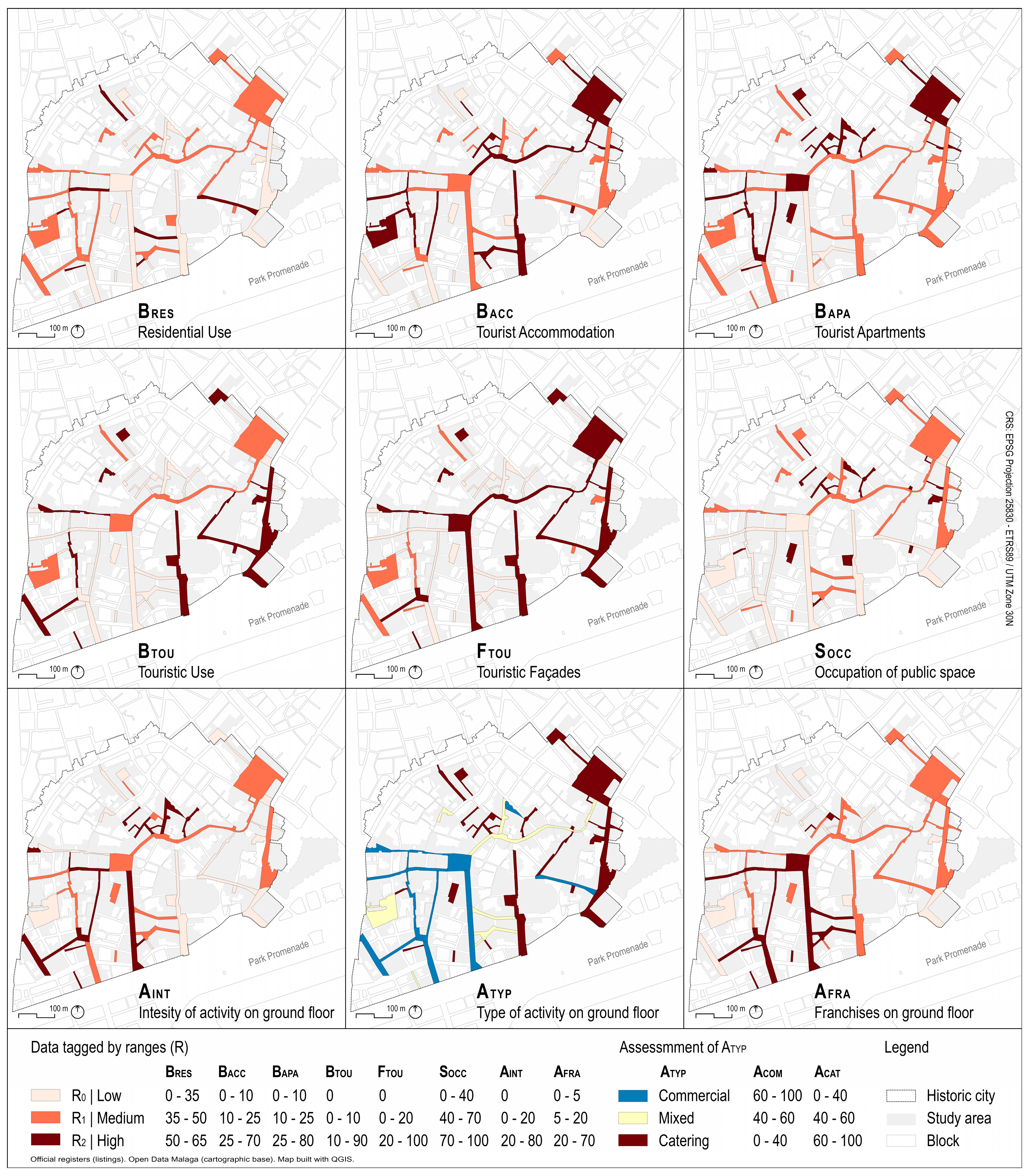
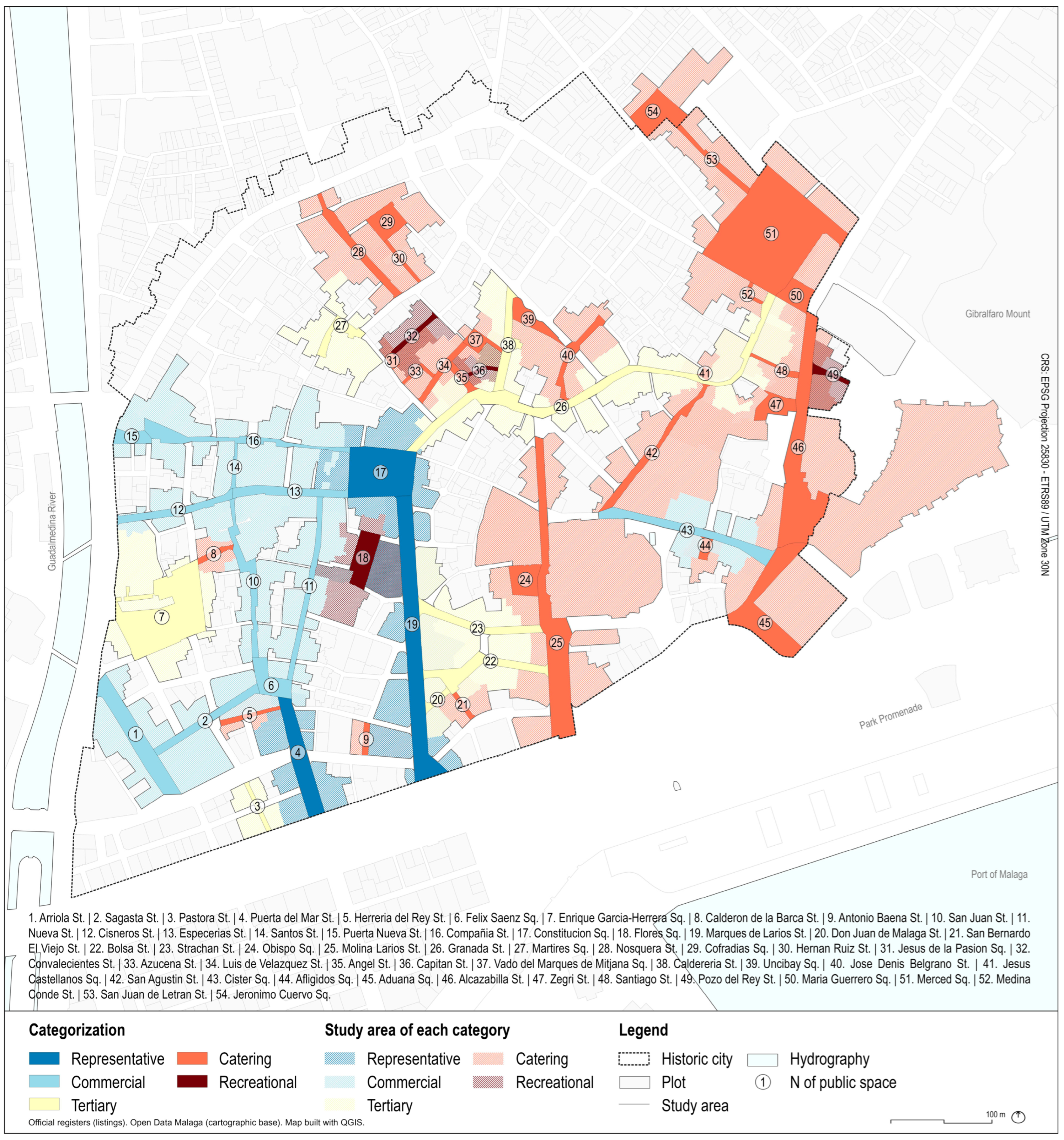
| Element | Name | Equation | Source |
|---|---|---|---|
| Building | BRES|Residential use It measures the percentage of residential use area adjacent to the public space. | [48,49] | |
| BACC|Tourist accommodation It measures the percentage of tourist accommodation area adjacent to the public space. | [48,49] | ||
| BAPA|Touristification of housing It measures the percentage of TA and TRH area in relation to the residential area adjacent to the public space. | [48,49] | ||
| BTOU|Tourist use It measures the percentage of tourist use area adjacent to the public space. | [48,50,51] | ||
| Activity | AINT|Ground-floor activity intensity It measures the percentage of active commercial and catering premises on ground floor adjacent to the public space. | Fieldwork | |
| ATYP|Type of activity It measures predominant type of activity on the ground floor. | It is calculated from ACOM and ACAT. | ||
| ACOM|It measures the percentage of commercial premises in relation to the total premises. | Fieldwork | ||
| ACAT|It measures the percentage of catering premises in relation to the total premises. | Fieldwork | ||
| AFRA|Franchises It measures the percentage of franchises on the ground floor adjacent to the public space. | Fieldwork |
| Element | Name | Equation | Source |
|---|---|---|---|
| Street/Square | SOCC|Occupation of public space It measures the percentage of occupation by exhibitors and terraces on the public space. | Fieldwork | |
| Façade | FTOU|Tourist façade It measures the percentage of length of tourist façade in relation to the total length of public space. | [48,50,51] |
| Indicators | 1. Representative Marques de Larios St. | 2. Commercial Especerias St. | 3. Tertiary Granada St. | 4. Catering Hernan Ruiz St. | 5. Recreational Capitan St. |
|---|---|---|---|---|---|
| BRES | 26.82 | 50.32 | 43.86 | 38.11 | 18.90 |
| BACC | 11 | 14.51 | 25.20 | 25.04 | 50.39 |
| BAPA | 3.42 | 19.61 | 24.94 | 39.66 | 72.72 |
| BTOU | 0 | 0 | 2.17 | 0 | 0 |
| FTOU | 100 | 0 | 23.34 | 0 | 0 |
| SOCC | 0.90 | 0.18 | 17.79 | 25.14 | 29.05 |
| AINT | 0.90 | 72.35 | 65.47 | 55.57 | 91.53 |
| ATYP | COM | COM | MIX | CAT | CAT |
| AFRA | 65.87 | 37.77 | 17.35 | 0 | 0 |
| Image | Location | Diagram—Pattern |
|---|---|---|
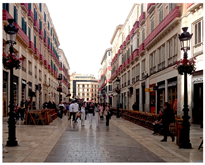 | 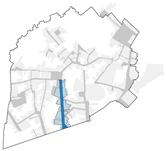 Marques de Larios St. | 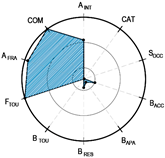 1. Representative |
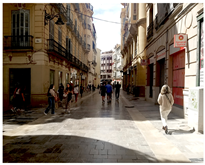 | 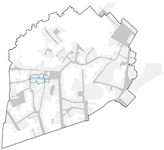 Especerias St. | 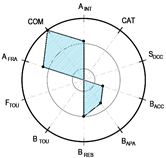 2. Commercial |
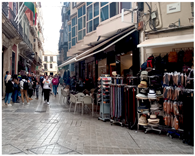 |  Granada St. | 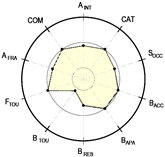 3. Tertiary |
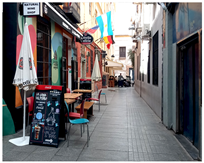 | 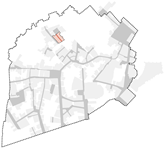 Hernan Ruiz St. | 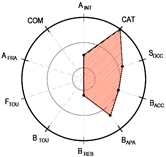 4. Catering |
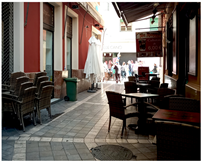 | 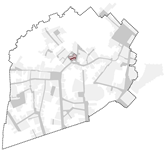 Capitan St. |  5. Recreational |
Disclaimer/Publisher’s Note: The statements, opinions and data contained in all publications are solely those of the individual author(s) and contributor(s) and not of MDPI and/or the editor(s). MDPI and/or the editor(s) disclaim responsibility for any injury to people or property resulting from any ideas, methods, instructions or products referred to in the content. |
© 2023 by the authors. Licensee MDPI, Basel, Switzerland. This article is an open access article distributed under the terms and conditions of the Creative Commons Attribution (CC BY) license (https://creativecommons.org/licenses/by/4.0/).
Share and Cite
Conejo-Arrabal, F.; Rosa-Jiménez, C.; Nebot-Gómez de Salazar, N. Patterns of Public Spaces in Spanish Mediterranean Touristified Historic Centres Based on Their Activities: Case Study of Malaga. Land 2023, 12, 1546. https://doi.org/10.3390/land12081546
Conejo-Arrabal F, Rosa-Jiménez C, Nebot-Gómez de Salazar N. Patterns of Public Spaces in Spanish Mediterranean Touristified Historic Centres Based on Their Activities: Case Study of Malaga. Land. 2023; 12(8):1546. https://doi.org/10.3390/land12081546
Chicago/Turabian StyleConejo-Arrabal, Francisco, Carlos Rosa-Jiménez, and Nuria Nebot-Gómez de Salazar. 2023. "Patterns of Public Spaces in Spanish Mediterranean Touristified Historic Centres Based on Their Activities: Case Study of Malaga" Land 12, no. 8: 1546. https://doi.org/10.3390/land12081546
APA StyleConejo-Arrabal, F., Rosa-Jiménez, C., & Nebot-Gómez de Salazar, N. (2023). Patterns of Public Spaces in Spanish Mediterranean Touristified Historic Centres Based on Their Activities: Case Study of Malaga. Land, 12(8), 1546. https://doi.org/10.3390/land12081546







